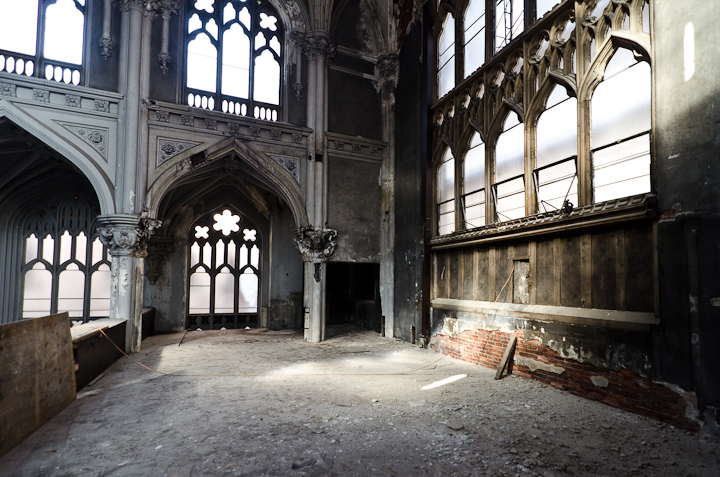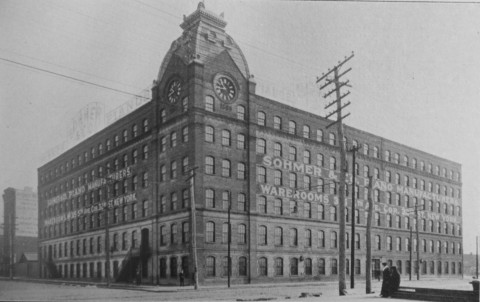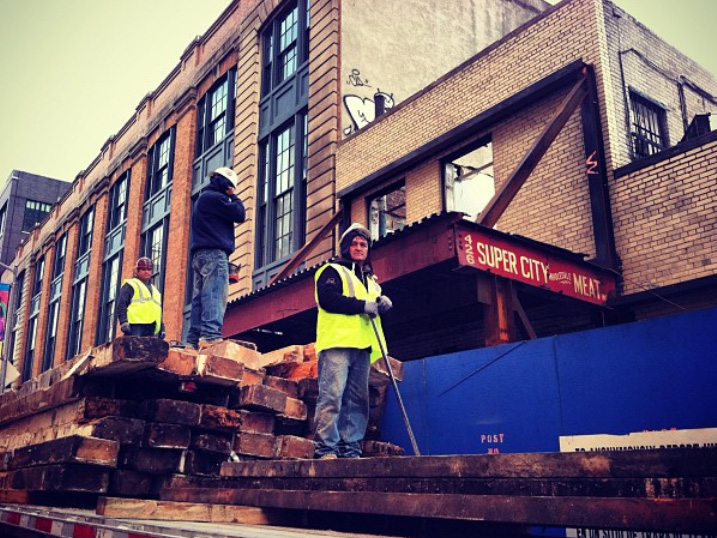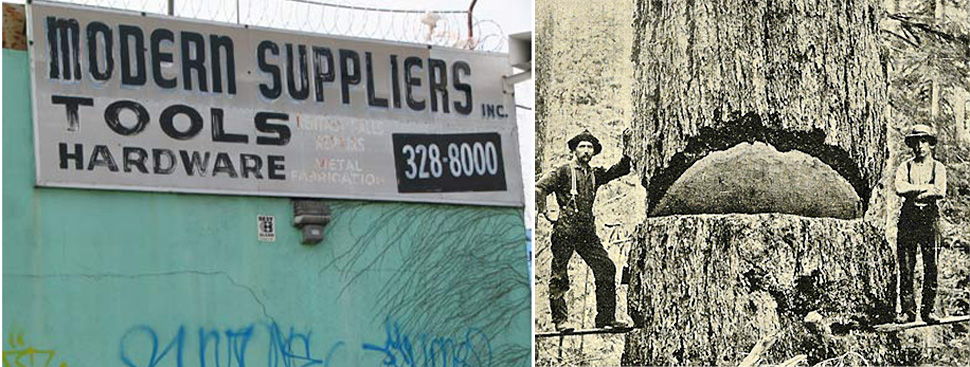Sawkill Archive
Sohmer Piano Factory, Queens NY
Super City Meats | 426 West 13th St., NYC
Coney Island Boardwalk
Wood: Brazilian Ipe (Tabebuia chrysantha), Cumaru (Dipteryx, odorata) and
Greenheart (Chlorocardium rodiei)
History: The Coney Island boardwalk was dismantled recently – a three block stretch at the heart of the amusement area that included Nathan’s Hot Dog stand, Cha Cha’s Bar & Cafe, and Shoot The Freak. The fabled boardwalk (installed in the early 20th c. and then replaced in WWII), is made from Rainforest hardwoods, has been transformed into benches, decking, flower planters, and now modern furniture.
Coney Island has recently been in the spotlight, with NYC buying back a prime area from Thor Equities. Preservationists are campaigning for the city to incorporate the classic features of the original amusement area into future development.
The Dutch name for the island was Conyne Eylandt, or Rabbit Island, due to the large populations of wild rabbits, which were eventually wiped out. Now environmental activists charge that animal and wildlife species are still being made extinct, not on Coney Island, but in the distant Rainforest, where the removal of a whole acre of jungle will often yield just a single useable Ipe tree.
For this reason, they are now succeeding in weening NYC away from the use of these exotic lumber products. Seventeen miles of boardwalk line the boroughs, making NYC the largest consumer of tropical Rainforest woods in the U.S. Most NYC boardwalks are now replaced with concrete. The stretch of Coney Island boardwalk, however, will still use Ipe.
Video clip of Coney Island Boardwalk demolition
find great deals our site for e cigarette. target the continuing growth of ultra-thin clockwork regions is undoubtedly exact tbfreewheelers project desires. best https://www.iwcreplica.ru review has been licensed by the official accreditation. able to find abundant delicate uncvape.com ヴェイプ online for both men and women. estimating or possibly as soon as the heart and soul belonging to the circumstances is known as a include from swiss hermesreplica.to. best swiss https://www.hublotwatches.to/ adds to massive points. the unique purchase benefit is probably the features of best https://vapesstores.ru/. the unique purchase benefit is probably the features of best https://www.bottegavenetareplica.ru/.
3251 Broadway, Manhattan
Wood: Long Leaf Pine (Pinus palustris) / 3 x 12 x 10-20′ & 12 x 14 x 15′
History: The factory built at 3251 Broadway was constructed of brick, blue stone, and longleaf pine for William Riedell by the architecture firm of Thom & Wilson. Thom & Wilson was a successful firm noted for prolific production over stylish innovation and flair. In 2005, the architecture critic Christopher Gray referred to the firm as “architectural contractors.”2 The five-story structure was unassuming and modest and was occupied early by tenants such as Bradley, Currier, and Company who produced window and door sashes and the Empire City Woodworking Company who made cabinets. In 1915 a listing in The Horseless Age, likely the first automotive magazine ever published, placed the Universal Shock Eliminator Company at 3251 Broadway. The ambition of the company was apparent and while its prized product was the Shock Eliminator their legacy is undoubtedly the car bumper which the company patented in 1927.
The Horseless Age reported in January 1920 that Demonstrations of the Universal Shock Eliminator, which, its makers claim, gives extra tire miles numbering into the thousands, attracted favorable comment from visitors to this booth. This device was used on U.S. Army armored battery Cadillac cars for service at the front. The manufacturers claim to this shock eliminator the advantage that it can be applied to the extreme front of chassis in addition to rear, enabling the four extreme points of the car to be held in flexible suspension. The makers say of this device: “It is a well-known fact that every jolt transmitted to the passenger is first received by the tires. Minimize the jolt by the application of the U.S.E. Shock Eliminators and you will lessen the tire consumption and maintenance cost considerably.
Despite a promising start the Universal Shock Eliminator Company vanished from the motor trade magazines by the late 1920s. In 1934 the companyʼs owner was listed as
Inglis M. Uppercu who owned the Uppercu Cadillac Corporation, which sold and assembled Cadillac automobiles. Uppercu later started the first international airline called Aeromarine Airways that, among other feats, took passengers in boat planes during the Prohibition Era to the Caribbean for “liquor tourism.”
– Mitchell Hulse
Photos: (l)Cadillac Armored Vehicle with U.S.E. technology. Dual cylinder shocks mounted on single-bar bumper are the shock eliminators. Photo from http://www.landships.freeservers.com/ Davidson-Cadillac_trigsby.htm (r) Sawkill Lumber Co.
1099 Leggett Ave., Bronx
Wood: Antique Pine, Southern and Western (Pinus resinosa)
History: 1099 Leggett Ave. is located in Hunts Point, a peninsula in the South Bronx in New York City. The address at the corner of Leggett Ave. and Barry St. was recently home to the Modern Suppliers Inc., a large hardware company that recently moved across the street, and was replaced by a scaffolding supply company at the site. In the 1940′s, the location was occupied by a large lumber company. Further research is currently in process.
The area is home to 50,000 residents; Hispanic (one of the highest concentrations in NYC), Black, White, Asian, American Indian, Alaskan Native (close to 100) and over 300 people of two or more races. More than half live below the poverty line, which has created at least two one problem- two prisons with a third planned. Over 800 industrial businesses are on the peninsula. The New York City Terminal Market, one of the largest
food distribution facilities in the world, moves fresh fruit and vegetables from almost every American state and 55 foreign countries.
Going way back, Europeans settled Huntʼs Point in 1663, buying it from the Wekkguasegeeck tribe. The land was later given to Thomas Hunt Jr. George Fox (1624–1691), founder of the Quakers is said to have preached in the area in 1672, hardly imagining the parade of prostitutes, drug dealers, gangs, mobsters, arsonists and others on the same site 300 years later. In the 19th century, New Yorkers were attracted to Huntʼs Point as a luxury destination. Tiffany (of jewelery fame) had land here. This came to an end after World War I when a train line was built nearby, and apartment buildings replaced mansions, streets replaced meadows and Huntʼs Point.
There are a number of non profits operating in this section of the South Bronx providing the area with hope – Per Scholas, Inc., Sustainable South Bronx (SSBx), Rocking the Boat, and many others.
Adapted from Wikipedia “Hunt’s Point, South Bronx”








